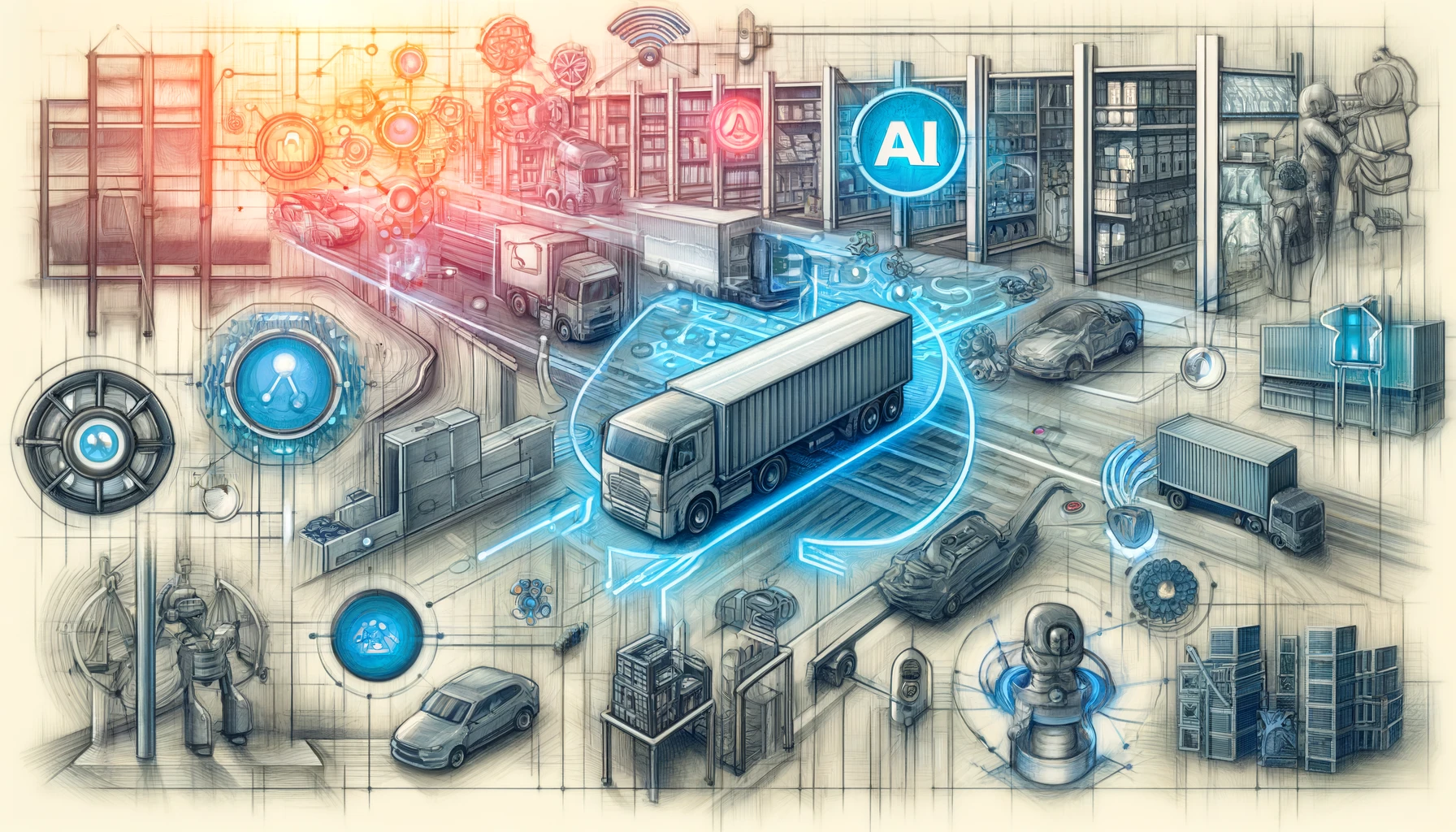Intralogistics 4.0: How Artificial Intelligence is Revolutionizing Warehouse Management
Published on: August 27, 2025 | By: blog-ai

What is Intralogistics 4.0?
Intralogistics 4.0 represents the integration of cutting-edge technologies, primarily Artificial Intelligence (AI), Internet of Things (IoT), and robotics, into warehouse operations. The goal is to automate, optimize, and streamline internal logistics processes to respond to the growing demands of modern supply chains. Unlike traditional warehouses, which rely heavily on manual labor and static workflows, Intralogistics 4.0 emphasizes real-time data, predictive analytics, and intelligent automation.
For businesses, this means faster order fulfillment, reduced operational costs, and improved accuracy in inventory tracking. Learn more on our AI solutions page.
Key Components of Intralogistics 4.0
- Process Automation: Robots and autonomous vehicles handle repetitive tasks like picking, packing, and sorting.
- Data Analytics: AI analyzes historical and real-time warehouse data to optimize operations and forecast demand.
- IoT Connectivity: Sensors and smart devices communicate instantly, ensuring smooth coordination between machines and staff.
- Digital Twin Technology: Simulates warehouse operations digitally to test layout changes and workflow improvements without physical disruption.
Explore detailed case studies on Supply Chain Digital for real-world examples.
Impact of AI on Warehouse Management
Inventory Optimization
AI algorithms improve inventory accuracy by analyzing historical sales data, seasonal trends, and supplier performance. As a result, warehouses experience fewer stockouts and overstock situations, leading to cost savings and higher customer satisfaction. Companies like Amazon and DHL have reported inventory error reductions of up to 20% using AI-driven systems.
Operational Efficiency
Smart AI systems optimize warehouse layouts by predicting the most efficient item placement. Frequently accessed items are positioned for quick retrieval, reducing employee travel time and boosting overall productivity by up to 25%. Additionally, AI can suggest dynamic route planning for autonomous vehicles within the warehouse.
Predictive Maintenance
AI monitors equipment health in real time, predicting failures before they occur. Maintenance can then be scheduled proactively, minimizing downtime and extending equipment lifespan. According to MHI Foundation, predictive maintenance reduces unexpected downtime by 30–40%.
For practical implementation, see our article on predictive maintenance with AI.
Recent AI Innovations in Warehousing
- Robotics and Automation: AI-powered robots handle packaging, labeling, and sorting with high precision, freeing human workers for decision-making tasks.
- Computer Vision: Intelligent cameras track inventory, detect anomalies, and ensure real-time accuracy.
- Machine Learning Algorithms: Analyze operational data to optimize picking sequences, storage locations, and workflow scheduling.
Reported results include:
- Labor Cost Reduction: Up to 30% savings via automation.
- Productivity Boost: Up to 25% faster order processing.
- Forecast Accuracy: AI-driven demand predictions are 20% more precise than traditional methods.
Further reading: MHI Foundation – AI in Logistics
Integrating AI into Warehouses
- Needs Assessment: Evaluate specific warehouse challenges and set measurable goals.
- Technology Selection: Choose AI solutions compatible with existing systems.
- Staff Training: Ensure employees can work effectively alongside AI and robotics.
- Pilot Projects: Start with small-scale implementations to monitor performance and adjust strategies.
- Full Integration: Expand AI adoption gradually while continuously monitoring KPIs.
Contact us via this page for consultation on AI integration strategies for your warehouse.
Frequently Asked Questions
How does AI improve warehouse safety?
AI enhances safety using intelligent surveillance systems, hazard detection, and automatic alerts. This reduces accidents and ensures compliance. See OSHA – AI Safety in Industry.
What are the costs of adopting AI?
Initial investments vary, but cost savings from higher efficiency, fewer errors, and reduced downtime often outweigh the upfront expense.
Will AI replace human workers?
No. AI automates repetitive tasks, allowing humans to focus on higher-value work such as planning, supervision, and decision-making.
Comparative Table: Traditional vs AI-Based Stock Management
| Method | Accuracy | Cost | Time |
|---|---|---|---|
| Traditional | Medium | High | Slow |
| AI-Based | High | Reduced | Fast |
Data source: ScienceDirect – AI in Warehouse Management
Conclusion
Artificial Intelligence in intralogistics is reshaping warehouse operations by improving inventory accuracy, operational efficiency, and safety. With Intralogistics 4.0, businesses can reduce costs, enhance customer satisfaction, and stay competitive in a fast-changing logistics landscape. The future of warehouse management is connected, intelligent, and fully automated.
For more insights, explore our AI & Logistics Blog.




